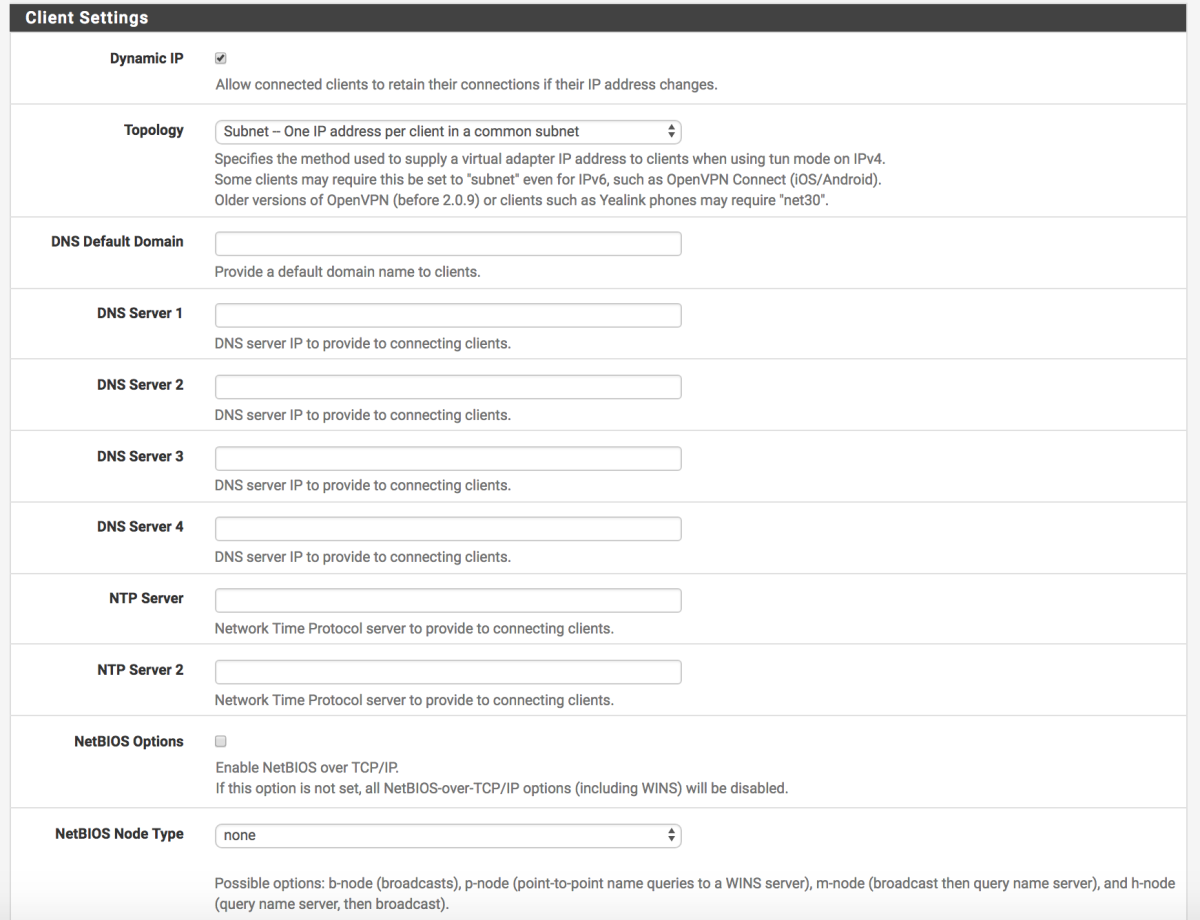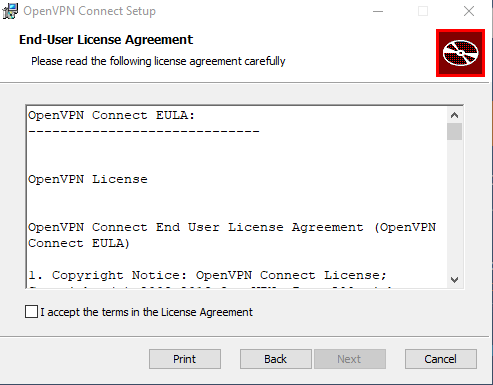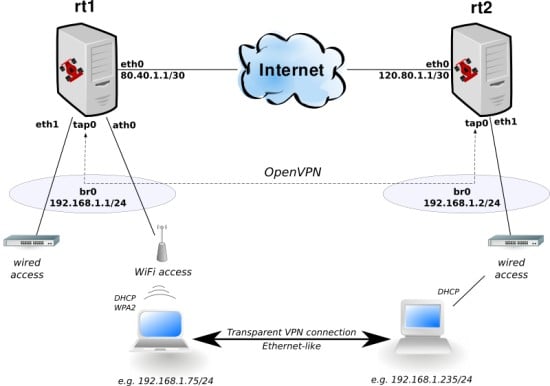We read about how an OpenVPN Server can be setup and made ready to connect from an OpenVPN client in the article Configuring OpenVPN in Ubuntu using TUN/TAP
Let’s see how to set it up in a windows machine at home and how it can be used to connect to the OpenVPN server. I currently use a windows 8.1 machine. I will download the OpenVPN client from their official website. Since I use Windows 8.1, I will choose the exe file for windows installers ‘Installer (64-bit), Windows Vista and later’. Once downloaded, double click the exe and install the software. Unless you need to change it, the default OpenVPN installation path would be C:Program FilesOpenVPN
How to Setup the OpenVPN Client GUI. It takes less than 5 minutes to complete the setup and create your first VPN connection. Make sure you have your VPN provider’s login details online so you can download the config files and connect to the VPN server. If you don’t have a VPN subscription yet, we recommend IPVanish or NordVPN. Learn how to use an OpenVPN client to connect to a Client VPN endpoint. Select your cookie preferences We use cookies and similar tools to enhance your experience, provide our services, deliver relevant advertising, and make improvements.
Please note that openvpn does not run on windows xp anymore. The operating systems for windows servers are for the windows 7 onwards only.
In order to setup the client, and start connecting to the server we first need to copy the following four files from the OpenVPN server.
- The sample client configuration file at /usr/share/doc/openvpn/examples/sample-config-files/client.conf
- The master CA certificate – ca.crt
- The client certificate generated in the server for my machine which I had named as clientname.crt
- The client key named clientname.key
If you have root access to the OpenVPN server, just issue the following commands and copy the contents from the shell directly.
In my windows client, now I will go to Start -> Search for notepad, right click and select ‘Run as administrator’. Then copy the contents of client.conf and save the file as C:Program FilesOpenVPNconfigclient.ovpn. You can choose whatever name you like for the file, but it is mandatory that it should end with the extension .ovpn so that OpenVPN can identify it as a config file. Create three new files, each for ca.crt, clientname.crt and clientname.key and save them also in C:Program FilesOpenVPNconfig folder. Make sure that the extension of the files read as .crt and .key and not .crt.txt or .key.txt
Open the client.ovpn file and make sure to place in the correct location the following files mentioned in the conf. In my case I placed them all in the same config folder as client.ovpn, hence I have not mentioned the full path to the files.
This will import file when you run the Openvpn.
In addition, you need to specify the OpenVPN server address below. You can either provide the hostname or the IP Address. 1194 is the default OpenVPN port.
Connecting to Server from your OpenVPN Client
The entire process has now finished and it is time to connect to the OpenVPN server from the client. Double click on the OpenVPN GUI shortcut which will be present in your Desktop after installation. You will notice a small computer icon with a lock in the system tray icon. Right click on it, and click ‘Connect’.
This way, OpenVPN access server, and you’re almost ready to go.
If more than one configs are present, it will list all the configs added in the OpenVPN Client config folder. Choose the one you want to connect and click ‘Connect’. If everything goes well, you will soon get a message that OpenVPN is connected. It will automatically assign a free internal IP to your machine as shown in the message below.
If you check your client machine’s shell, and issue an ‘ipconfig’ command you will see the new internal IP address listed there.
In addition, you would be able to ping the internal IP Addresses to and from the client. If it doesn’t respond, check your firewall settings.
Please nothe that official OpenVPN is an open source OpenVPN.
The post was intended to give you a basic introduction on how to connect to an OpenVPN server from a windows client. Hope the post has been of help for you, and has served its purpose.
Openvpn Connect Client Update
-->This article helps you configure a VPN client to connect to a virtual network using Point-to-Site VPN and Azure Active Directory authentication. Before you can connect and authenticate using Azure AD, you must first configure your Azure AD tenant. For more information, see Configure an Azure AD tenant. For more information about Point-to-Site, see About Point-to-Site VPN.
Note
Azure AD authentication is supported only for OpenVPN® protocol connections and requires the Azure VPN client.
Openvpn Connect Client V3
Working with client profiles
For every computer that wants to connect to the VNet via the VPN client, you need to download the Azure VPN Client for the computer, and also configure a VPN client profile. If you want to configure multiple computers, you can create a client profile on one computer, export it, and then import it to other computers.
To download the Azure VPN client
Download the Azure VPN Client to the computer.
Verify that the Azure VPN Client has permission to run in the background. To check and enable permissions, navigate to Start -> Settings -> Privacy -> Background Apps.
Under Background Apps, make sure Let apps run in the background is turned On.
Under Choose which apps can run in the background, turn settings for Azure VPN Client to On.
To create a certificate-based client profile
When working with a certificate-based profile, make sure that the appropriate certificates are installed on the client computer. For more information about certificates, see Install client certificates.
To create a RADIUS client profile
Note
The Server Secret can be exported in the P2S VPN client profile. Instructions on how to export a client profile can be found here.
To export and distribute a client profile
Once you have a working profile and need to distribute it to other users, you can export it using the following steps:
Highlight the VPN client profile that you want to export, select the ..., then select Export.
Select the location that you want to save this profile to, leave the file name as is, then select Save to save the xml file.
Openvpn Connect Client For Windows
To import a client profile
On the page, select Import.
Browse to the profile xml file and select it. With the file selected, select Open.
Specify the name of the profile and select Save.
Select Connect to connect to the VPN.
Once connected, the icon will turn green and say Connected.
To delete a client profile
Select the ellipses next to the client profile that you want to delete. Then, select Remove.
Select Remove to delete.
Create a connection
On the page, select +, then + Add.
Fill out the connection information. If you are unsure of the values, contact your administrator. After filling out the values, select Save.
Select Connect to connect to the VPN.
Select the proper credentials, then select Continue.
Once successfully connected, the icon will turn green and say Connected.
To connect automatically
These steps help you configure your connection to connect automatically with Always-on.
On the home page for your VPN client, select VPN Settings.
Select Yes on the switch apps dialogue box.
Make sure the connection that you want to set is not already connected, then highlight the profile and check the Connect automatically check box.
Select Connect to initiate the VPN connection.
Diagnose connection issues
To diagnose connection issues, you can use the Diagnose tool. Select the ... next to the VPN connection that you want to diagnose to reveal the menu. Then select Diagnose.
On the Connection Properties page, select Run Diagnosis.
Sign in with your credentials.
View the diagnosis results.
FAQ
Is the Azure VPN Client supported with Windows FIPS mode?
Yes, with the KB4577063 hotfix.
How do I add DNS suffixes to the VPN client?

You can modify the downloaded profile XML file and add the <dnssuffixes><dnssufix> </dnssufix></dnssuffixes> tags.
How do I add custom DNS servers to the VPN client?

You can modify the downloaded profile XML file and add the <dnsservers><dnsserver> </dnsserver></dnsservers> tags.
Note
The OpenVPN Azure AD client utilizes DNS Name Resolution Policy Table (NRPT) entries, which means DNS servers will not be listed under the output of ipconfig /all. To confirm your in-use DNS settings, please consult Get-DnsClientNrptPolicy in PowerShell.
Can I configure split tunneling for the VPN client?
Split tunneling is configured by default for the VPN client.


How do I direct all traffic to the VPN tunnel (forced tunneling)?
You can configure forced tunneling using two different methods; either by advertising custom routes, or by modifying the profile XML file.
Note
Internet connectivity is not provided through the VPN gateway. As a result, all traffic bound for the Internet is dropped.

Advertise custom routes: You can advertise custom routes 0.0.0.0/1 and 128.0.0.0/1. For more information, see Advertise custom routes for P2S VPN clients.
Profile XML: You can modify the downloaded profile XML file to add the <includeroutes><route><destination><mask> </destination></mask></route></includeroutes> tags.
How do I add custom routes to the VPN client?
You can modify the downloaded profile XML file and add the <includeroutes><route><destination><mask> </destination></mask></route></includeroutes> tags.
How do I block (exclude) routes from the VPN client?
You can modify the downloaded profile XML file and add the <excluderoutes><route><destination><mask> </destination></mask></route></excluderoutes> tags.
Can I import the profile from a command-line prompt?
You can import the profile from a command-line prompt by placing the downloaded azurevpnconfig.xml file in the %userprofile%AppDataLocalPackagesMicrosoft.AzureVpn_8wekyb3d8bbweLocalState folder and running the following command:
To force the import, use the -f switch.
Next steps
For more information, see Create an Azure Active Directory tenant for P2S Open VPN connections that use Azure AD authentication.
Comments are closed.